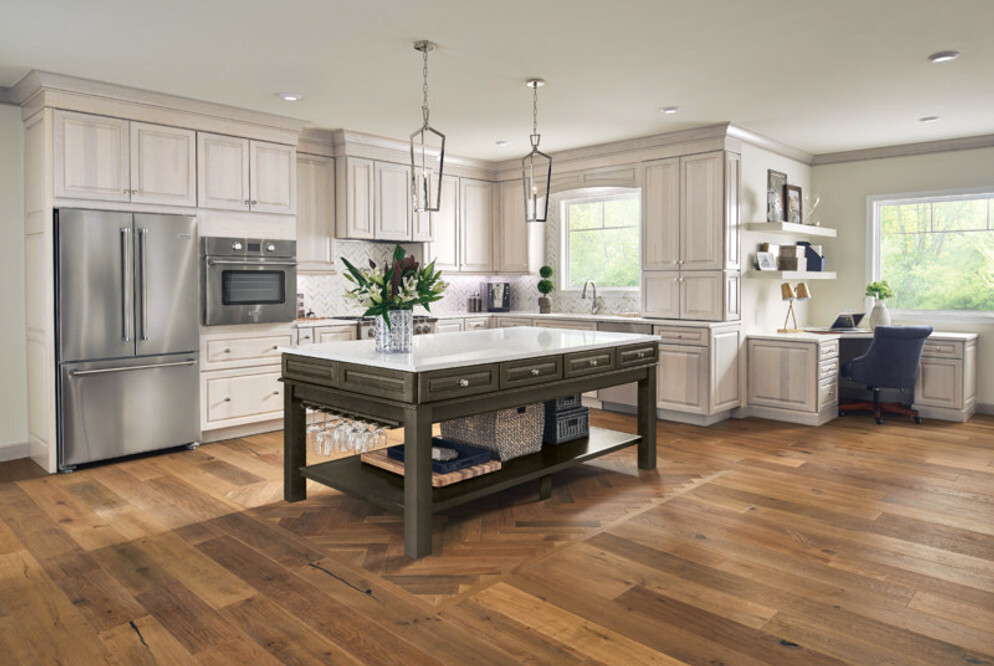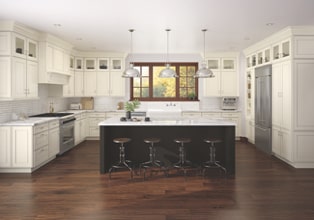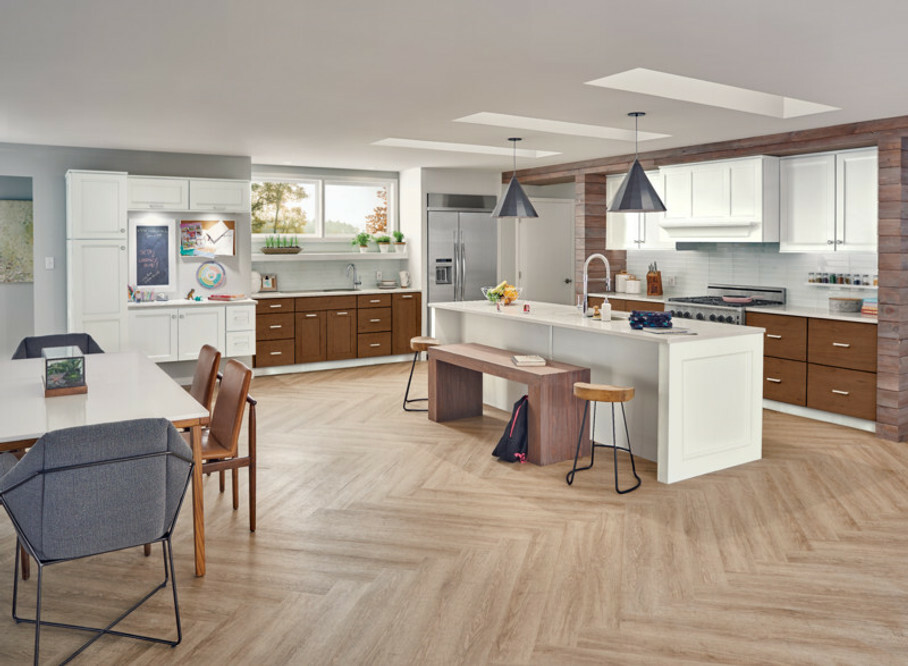Which kitchen cabinet style matches your style?
Get familiar with some of the telltale visual cues and recognizable design elements of five common kitchen design styles through the links below, or use our Style Finder Tool to receive personalized style advice and product recommendations.

TRADITIONAL
- Takes inspiration from the past
- Emphasizes details – generous moldings, raised panel doors, carved elements
- Rich dark stains and understated paint colors (often white) create an overall elegance
- Includes natural materials – wood, granite, slate, copper
- Can be defined as: formal, classic, refined Learn More About Traditional Rooms

TRANSITIONAL
- A blend of traditional and contemporary style
- More relaxed than traditional, softer than contemporary
- Tailored appearance with clean lines, nothing fancy or frilly (think: Shaker-style cabinets)
- May include sleek elements like glass mosaic tile or a stainless steel range hood
- Often features a palette of warm neutrals – creams, tans, greys, chocolate browns
- Can be defined as: casual, understated, informal Learn More About Transitional Rooms

CONTEMPORARY
- Reflects what’s on-trend and fashionable today
- Influenced by many global styles and design eras
- A streamlined appearance – less is more
- Warm colors and touches of texture keep things inviting
- Can be defined as: monochromatic, open, uncluttered Learn More About Contemporary Rooms

MODERN
- A period-specific style that peaked in the 1950s-60s with Mid-Century Modern
- Sleek, orderly look that emphasizes strong horizontal and vertical lines
- Often features glossy surfaces, like glass, stainless steel and acrylic
- Form follows function – shuns anything that’s purely decorative
- Can be defined as: minimalist, bold, linear Learn More About Modern Rooms

RUSTIC
- Influences vary from country farmhouse to Tuscan villa to log cabin lodge
- Simple designs that celebrate raw, rugged and natural materials – hand-hewn beams, exposed brick walls, unfinished wood floors, wrought iron
- Often includes reclaimed items with an aged patina or new-made-to-look-old pieces with distressed finishes
- Texture is an important design feature
- Can be defined as: organic, cozy, muted Learn More About Rustic Rooms
